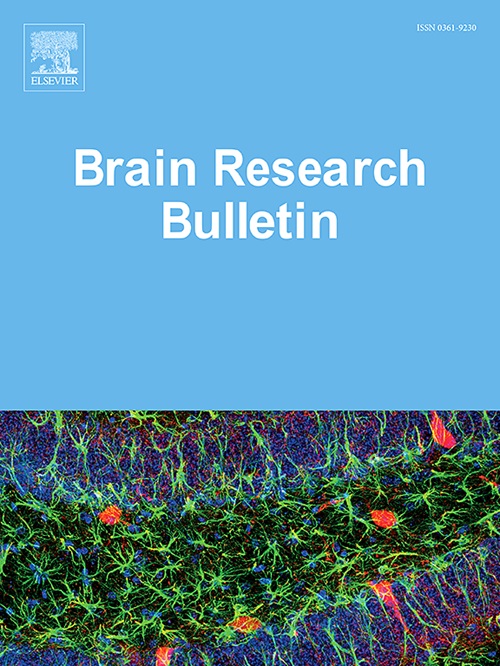Discovery and validation of CREB1 as a transcription target of icaritin: Implications for the treatment of depressive-like behavior
IF 3.5
3区 医学
Q2 NEUROSCIENCES
引用次数: 0
Abstract
Depression is a prevalent neuropsychiatric disorder characterized by persistent sadness and a lack of interest, significantly impacting the quality of life. Icaritin, a bioactive compound from Herba Epimedii, which has the antidepressant-like effects. However, the potential target of icaritin in the brain, especially concerning transcription factors, is not well understood. In this study, we demonstrated that icaritin significantly ameliorated depressive-like behaviors in a chronic corticosterone (CORT)-induced mouse model. This study aimed to investigate the role of icaritin in modulating the activity of cAMP-response element binding protein 1 (CREB1), a crucial transcription factor implicated in neuronal function and mood regulation. Through a combination of virtual screening and molecular docking, we identified CREB1 as a target by intersections of databases, leading to the selection of 43 candidate compounds, among which icaritin exhibited a favorable docking score and previously reported antidepressant effects. Biolayer interferometry (BLI) analysis confirmed the direct binding of icaritin to CREB1, with a dissociation constant (KD) of 7.02E-06 M. Further mutational analysis revealed that residues Q65 and Q229 of CREB1 were essential for the binding of icaritin. Additionally, Quantitative Real-Time PCR (qRT-PCR) demonstrated that icaritin treatment upregulated the mRNA levels of CREB1 target genes in the hippocampus and cortex. Bioinformatics analysis indicated that CREB1 interacts with several neuroprotective pathways, reinforcing its potential significance in depression. In conclusion, our findings suggest that icaritin may represent a promising therapeutic candidate for depression by enhancing CREB1-mediated neuroprotection, warranting further investigation into its clinical applications and underlying mechanisms.
求助全文
约1分钟内获得全文
求助全文
来源期刊

Brain Research Bulletin
医学-神经科学
CiteScore
6.90
自引率
2.60%
发文量
253
审稿时长
67 days
期刊介绍:
The Brain Research Bulletin (BRB) aims to publish novel work that advances our knowledge of molecular and cellular mechanisms that underlie neural network properties associated with behavior, cognition and other brain functions during neurodevelopment and in the adult. Although clinical research is out of the Journal''s scope, the BRB also aims to publish translation research that provides insight into biological mechanisms and processes associated with neurodegeneration mechanisms, neurological diseases and neuropsychiatric disorders. The Journal is especially interested in research using novel methodologies, such as optogenetics, multielectrode array recordings and life imaging in wild-type and genetically-modified animal models, with the goal to advance our understanding of how neurons, glia and networks function in vivo.
 求助内容:
求助内容: 应助结果提醒方式:
应助结果提醒方式:


